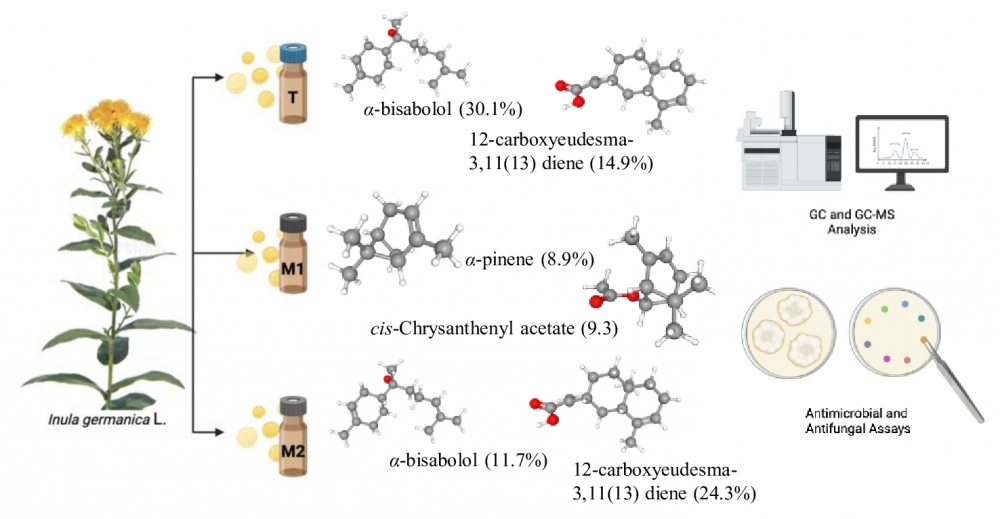JOURNAL 3368
Records of Natural Products
Year: 2024 Issue: 6 November-December
p.618 - 628
Viewed 1341 times.
GRAPHICAL ABSTRACT

ABSTRACT
The genus Inula (Asteraceae), consisting of over 100 species predominantly found in Asia, Europe, and Africa, is recognized for its antimicrobial properties. This study explores the chemical composition and antimicrobial activity of essential oils obtained from the aerial parts of Inula germanica L. through conventional (T) and modified (M1, M2) hydrodistillation methods. Using gas chromatography and gas chromatography-mass spectrometry, the conventional method (T) yielded α-bisabolol (30.1%) and 12-carboxyeudesma-3,11(13)-diene (14.9%) as major compounds. The modified method fraction M1 enriched monoterpenes such as trans-verbenol (9.5%), 1,8-cineole (9.5%), and cis-chrysanthenyl acetate (9.3%), whereas M2 was characterized by higher levels of sesquiterpenes like 12-carboxyeudesma-3,11(13)-diene (24.3%) and α-bisabolol (11.7%). The essential oils exhibited moderate to weak antimicrobial activity against tested bacterial and Candida strains, with minimum inhibitory concentrations (MICs) ranging from 125 to 2000 µg/mL. Among all studied samples, M1 showed the best antimicrobial activity against Candida strains in the MIC range of 125-500 µg/mL.
KEYWORDS- Inula
- essential oils
- hydrodistillation methods